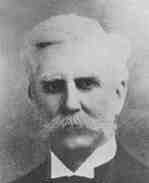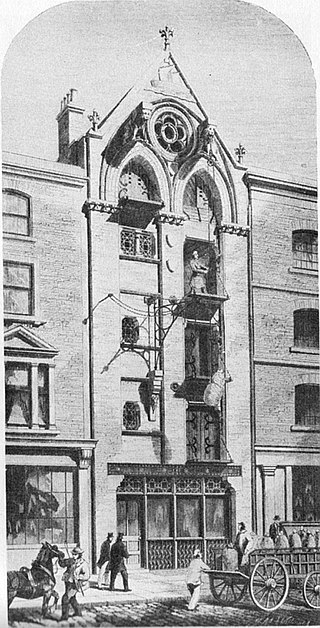
The history of Christianity is part of the history of a great many civilizations. Eastern Christianity helped create East-Central Europe, and made contributions to Arab Islamic Civilization and Asia. Christianity's influence has been vast. It is inextricably intertwined with the histories of its many cultures, especially Western culture. Christian history includes crusades and instances of intolerance and violence, yet those examples can be seen as contributing to the development of European cultural identity, politics, law, human rights, ideas on separation of church and state, and practices of tolerance and intolerance, activism and emancipation. Throughout the history of Christianity, it has been a source of social services, has introduced and furthered literacy and education, created and managed hospitals and hospices, and invented and spread technologies that contributed to economic development. Art and architecture, music, philosophy, even humanism, have been affected by it. Ethics, vice and virtue, family values, and the status of women - including condemning the Roman sexual double standard, marital infidelity, divorce, incest, polygamy, birth control, infanticide, and abortion - have all been part of the history of Christianity.

The Eleanor crosses were a series of twelve tall and lavishly decorated stone monuments topped with crosses erected in a line down part of the east of England. King Edward I had them built between 1291 and about 1295 in memory of his beloved wife Eleanor of Castile. The King and Queen had been married for 36 years and she stayed by the King's side through his many travels. While on a royal progress, she died in the East Midlands in November 1290. The crosses, erected in her memory, marked the nightly resting-places along the route taken when her body was transported to Westminster Abbey near London.

In Greek mythology, Adonis was the mortal lover of the goddesses Aphrodite and Persephone. He was famous and considered to be the ideal of male beauty in classical antiquity.

The Anchor Brewery was a brewery in Park Street, Southwark, London, England. Established in 1616, by the early nineteenth century it was the largest brewery in the world. From 1781 it was operated by Barclay Perkins & Co, who in 1955 merged with the Courage Brewery, which already owned the nearby Anchor Brewhouse. The Park Street brewery was demolished in 1981.

Coombe is a place in the London Borough of Croydon, situated south-east of central Croydon, between Addiscombe, Selsdon and Upper Shirley. Formerly a hamlet, since the growth of suburban development the area has become swallowed into the London conurbation and often does not appear on modern map.
The Vedanga are six auxiliary disciplines of Hinduism that developed in ancient times and have been connected with the study of the Vedas:

Sir Cecil Clementi Smith, was a British colonial administrator.

St Mildred, Poultry, was a parish church in the Cheap ward of the City of London dedicated to Anglo-Saxon Saint Mildred. It was rebuilt after the Great Fire of London, and demolished in 1872. St Mildred in the Poultry was the burial place of the writer Thomas Tusser. Some description of the church and its monuments is given in John Stow's Survey of London.

Dumuzid or Dumuzi or Tammuz, known to the Sumerians as Dumuzid the Shepherd and to the Canaanites as Adon, is an ancient Mesopotamian and Levantine deity associated with agriculture and shepherds, who was also the first and primary consort of the goddess Inanna. In Sumerian mythology, Dumuzid's sister was Geshtinanna, the goddess of agriculture, fertility, and dream interpretation. In the Sumerian King List, Dumuzid is listed as an antediluvian king of the city of Bad-tibira and also an early king of the city of Uruk.
Maccus mac Arailt, or Maccus Haraldsson, was a tenth-century King of the Isles. Although his parentage is uncertain, surviving evidence suggests that he was the son of Harald Sigtryggson, also known as Aralt mac Sitriuc, the Hiberno-Norse King of Limerick. Maccus' family is known as the Meic Arailt kindred. He and his brother, Gofraid, are first recorded in the 970s. It was during this decade and the next that they conducted military operations against the Welsh of Anglesey, apparently taking advantage of dynastic strife within the Kingdom of Gwynedd.

Nathaniel Bentley, commonly known as Dirty Dick, was an 18th and 19th-century merchant who owned a hardware shop and warehouse in London. He was possibly an inspiration for Miss Havisham in Charles Dickens' Great Expectations, after he refused to wash following the death of his fiancée on their wedding day.

Sarah Whitehead is the reported name of a woman whose ghost is said to haunt the Bank of England; her ghost became known as The Bank Nun.

Skillbeck's Warehouse, formerly 46 Upper Thames Street, London, was a drysalter's warehouse constructed in 1866 by William Burges. Burges was commissioned by the Skilbeck Brothers to re-model an existing warehouse; the result was "hugely influential" representing "probably the most successful attempt ever made to unite the requirements of art and mercantile convenience."

Camperdown Works was a jute works in Dundee, Scotland, which covered around 30 acres and at one point employed almost 6,000 workers. It was for a time the world's largest jute works and was owned by Cox Brothers.

Puglia was a protected cruiser of the Italian Regia Marina. She was the last of six Regioni-class ships, all of which were named for regions of Italy. She was built in Taranto between October 1893 and May 1901, when she was commissioned into the fleet. The ship was equipped with a main armament of four 15 cm (5.9 in) and six 12 cm (4.7 in) guns, and she could steam at a speed of 20 knots.
A mourning warehouse or maison de deuil was a shop which sold goods for funerals and the elaborate mourning of the Victorian era. These included dark clothing and fabric which might be required for years of wear after a death. These establishments could also provide large items such as coffins, a hearse and appropriate horses to draw it.
Preston Candover Long Barrow is an unchambered long barrow located near to the village of Preston Candover in the south-eastern English county of Hampshire.
















